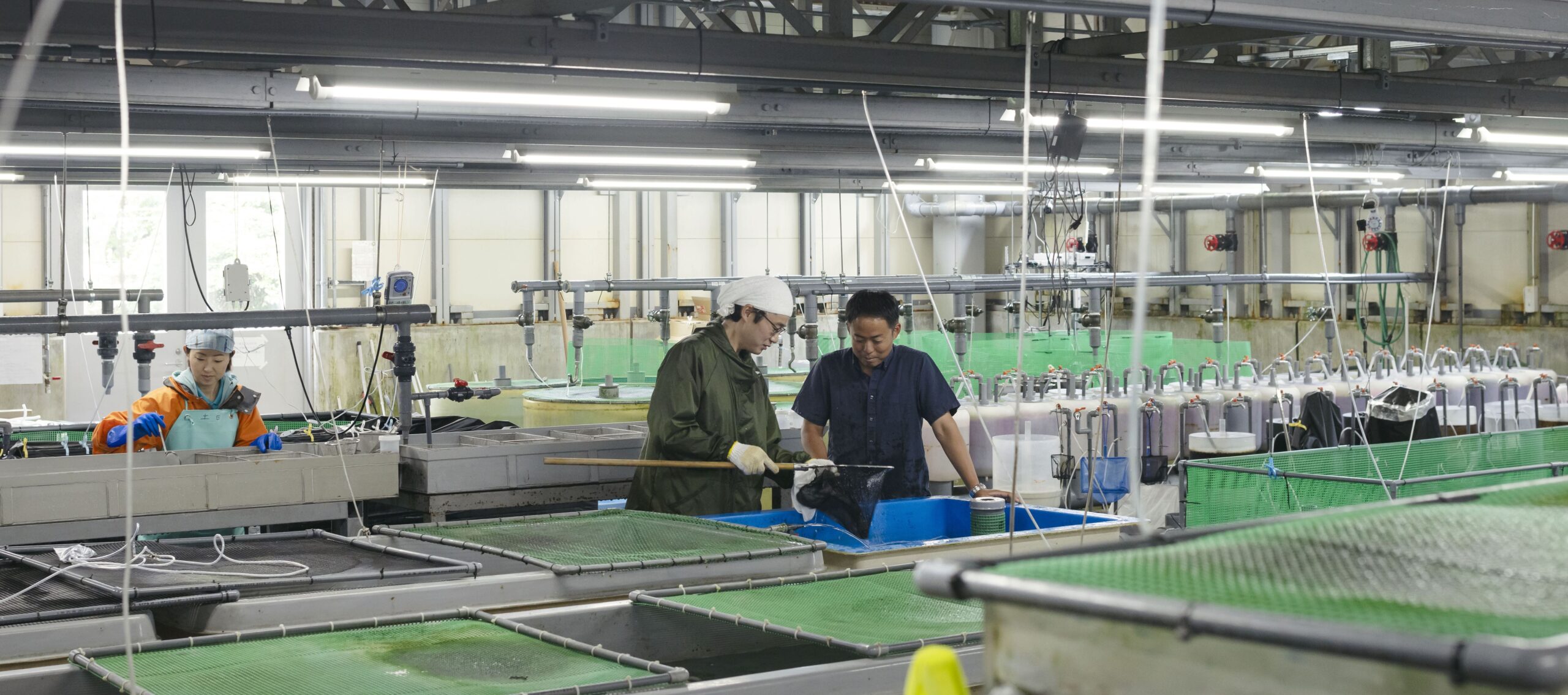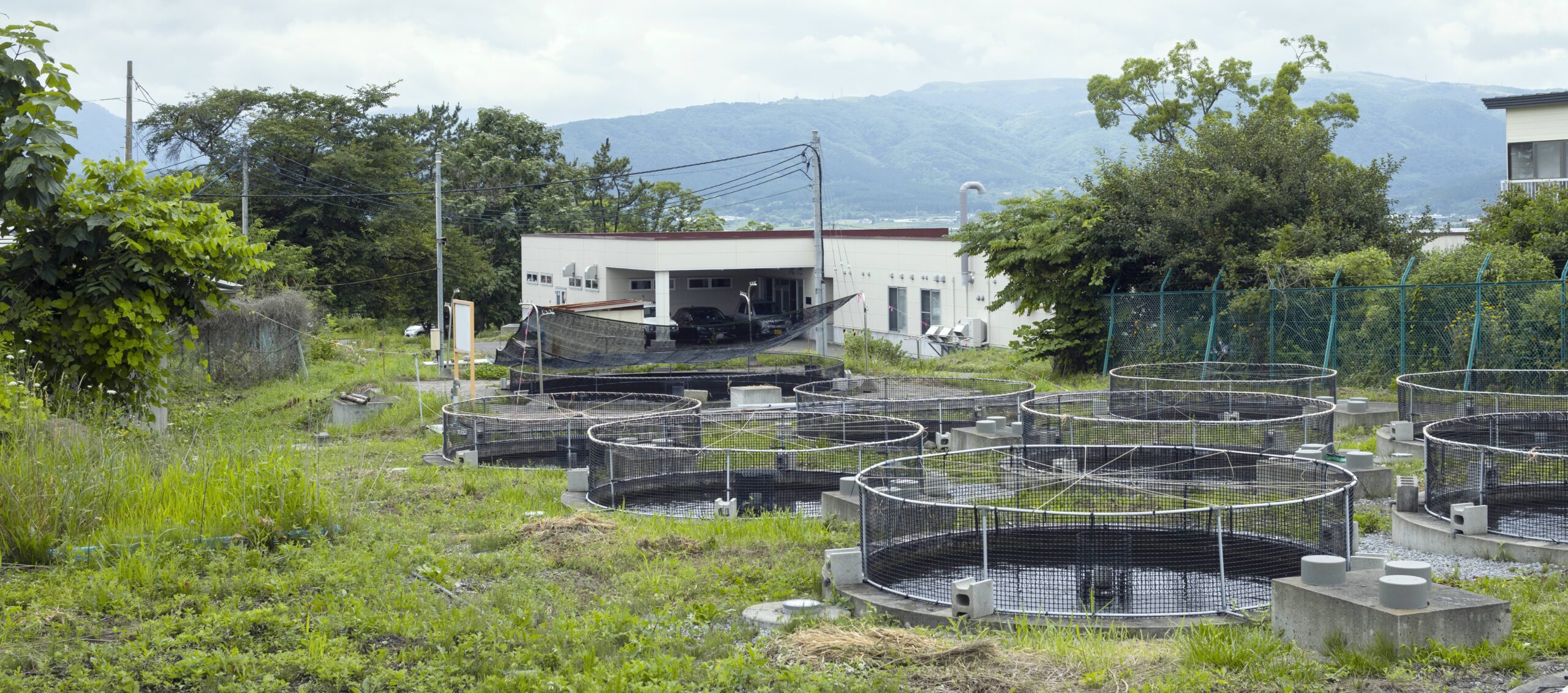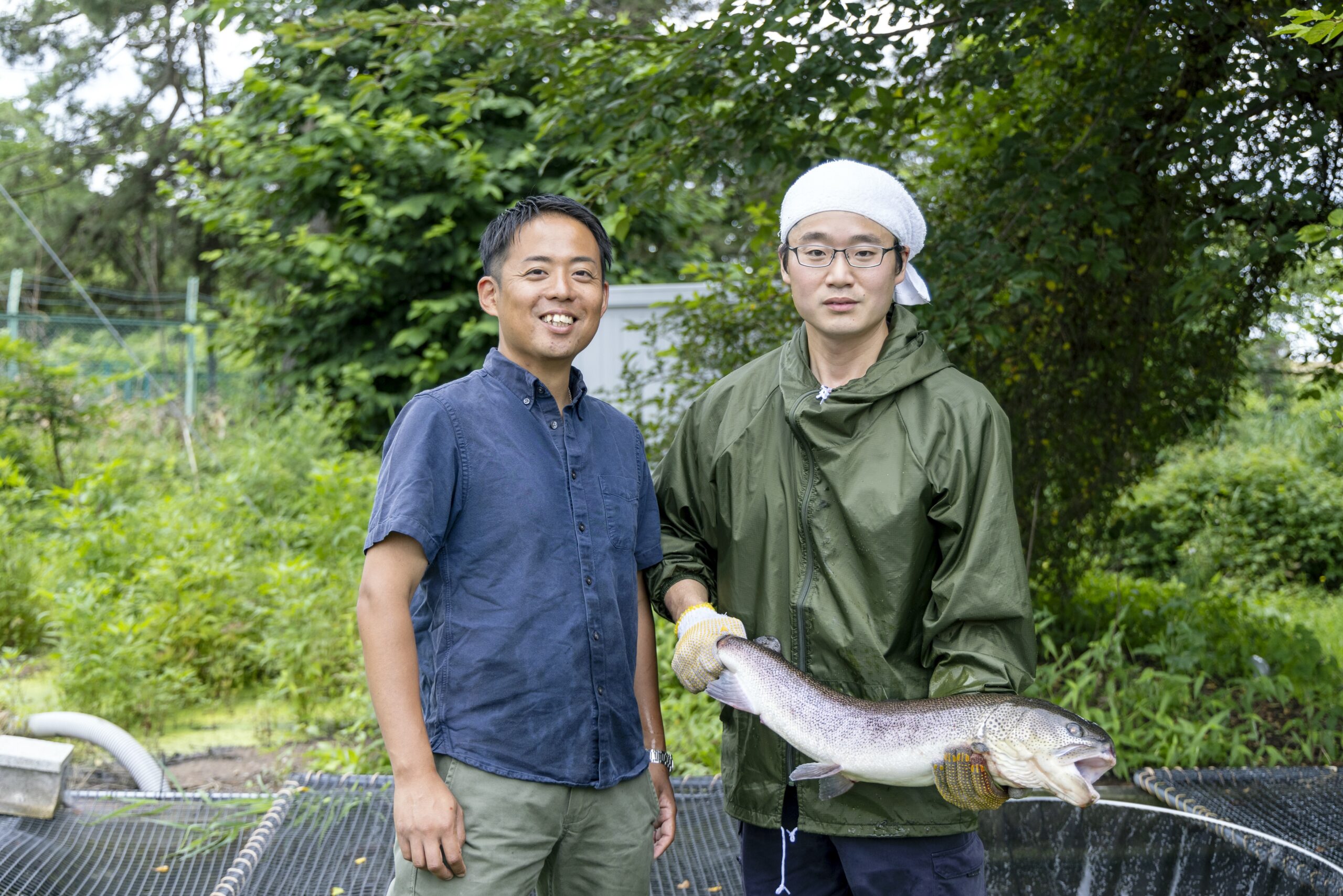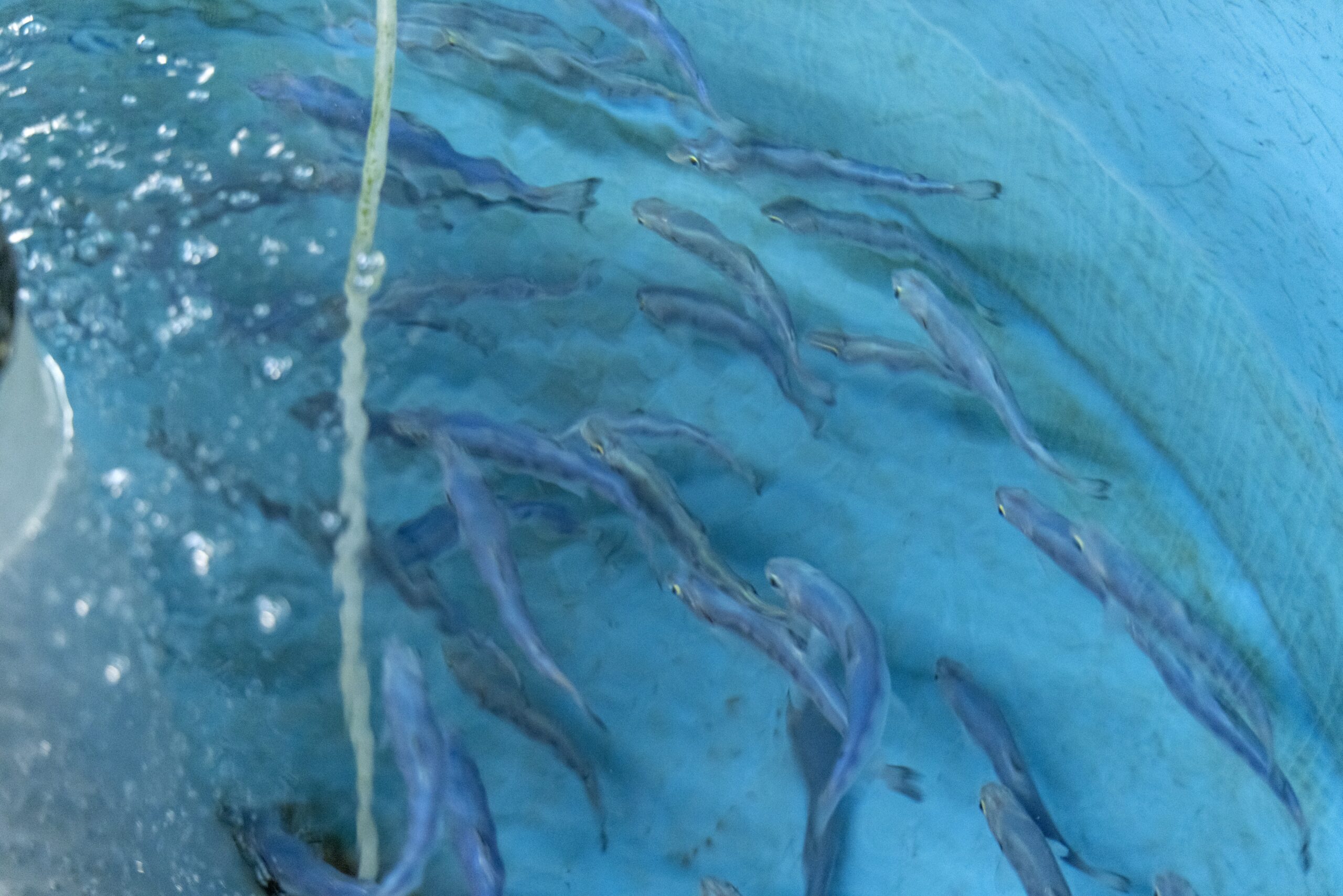This article was published in the Autumn 2023 issue of Litterae Populi. The full issue can be found here.
The Nanae Fresh-Water Station, Field Science Center for Northern Biosphere, is one of two fresh-water testing facilities of Hokkaido University. In the more than 80 years since its establishment in 1940, the Station has played flexible roles depending on the needs of the times. In recent years, it has also launched the utilization of "deliverable fish," besides its student training and researcher support efforts.

Breeding facility at the Nanae Fresh-Water Station. A total of 12 species (19 strains) of salmon/ trout are kept at the Station.
Highly skilled staff and an open environment
The Nanae Fresh-Water Station, where 12 species and 19 strains of salmon/trout (at the time of the interview) are bred for educational and research purposes, is about a 20-minute drive from Hokkaido University Hakodate Campus. It started out as a fish cultivation site of the Hakodate College of Fisheries, the predecessor of the Hokkaido University School of Fisheries Sciences. It later became a facility of the School of Fisheries Sciences and was brought under the aquatic research stations of the Field Science Center for Northern Biosphere-which was established in 2001 to integrate field science-related research facilities. The Station has many breeding tanks in a research building with indoor breeding rooms and twenty concrete outdoor ponds.
The Nanae Fresh-Water Station opens its doors for research and education from inside and outside Hokkaido University. The Station where a few elite members conduct research on fish may give an impression of a rigid organization dedicated only to research, but the staff aim to create an experiment station rooted in society and the local community. In addition to training and technical guidance for students of Hokkaido University and other universities, it conducts biological experiments for elementary and junior high school children as well as programs for high school students. The Station also sees dissemination of a fish-eating culture as a mission of fisheries science, and is currently promoting the Hokkaido University Trout Project to sell surplus salmon and trout as products, in cooperation with private companies in southern Hokkaido.
"The basis of this Station is the succession of fish species through artificial breeding to maintain and provide educational and research materials to researchers inside and outside Hokkaido University," says Associate Professor Seishi Hagihara of the Station, who assumed the post in March 2023. The Nanae Fresh-Water Station is operated by a very small staff and is supported by Dr. Eisuke Takahashi, a technical assistant working at the station for 11 years. He is in charge of general maintenance and management, and also that of the facilities. Associate Professor Hagihara praises him highly saying, "His experience and skills are number one at Hokkaido University, especially when it comes to breeding salmon/trout."
Meeting the demands of researchers with finely-tuned responses
The facility seems small in scale and not particularly well-equipped with high-tech devices. Why, then, is it conducive to research? Its best attribute is the attention paid to detail. Dr. Takahashi emphasizes, "Individuals handled as one lot at other larger breeding farms are carefully separated here, depending on the fish that fertilized the eggs. We do it to meet the research demands of users. Such a detailed response is the selling point of Nanae, and an important factor forming the basis of its existence." The Station has played its roles flexibly depending on the needs of the times since its establishment. Recently, aquaculture has been attracting attention for its potential contribution to easing the burden on natural resources.

There are sixteen round tanks for adult salmon and trout and nine for adult sturgeon in the outdoor area.
Ideas behind the sales of "deliverable fish"
Even the Station, which has accumulated know-how for many years, has some difficulties with the breeding of fish. To prevent a situation of not being able to provide enough fish due to an unexpected outbreak of disease, many fertilized eggs must be produced. "Production adjustment is very difficult. No matter how experienced you are, you can't predict the number of surplus fish. As a person handling living creatures, it is mentally hard to have to dispose of them, to waste them," says Associate Professor Hagihara. A new effort under these circumstances is the utilization of these unused fish by changing the name to "deliverable fish." The University has registered the Hokkaido University brand of products using these salmon and trout. Smoked cherry salmon was sold on a trial basis in June this year, in cooperation with graduates of the School of Fisheries Sciences. It is also planned to sell the surplus offspring of the wild sturgeons-caught along the coast of Hokkaido-that are artificially bred at Hokkaido University. Another purpose of selling products is to demonstrate the appeal of fisheries science and the Station to future students. The name "deliverable fish" means "all fish raised at the Station are deliverables (even if they are unused fish)."
The role of the Station as a provider of field practice unique to the northern hydrosphere should also be mentioned. It has been designated by the Ministry of Education, Culture, Sports, Science and Technology, as a joint-use center for experience-based education to learn about the aquatic environment of Hokkaido as a food base, alongside the Usujiri Fisheries Station and Oshoro Marine Station run by the University. Specially Appointed Assistant Professor Mika Kuroda, who is known for her research on stranded whales and is responsible for marine mammal practice, says, "The Nanae Fresh-Water Station is fully capable of breeding and maintaining fish from the stage of eggs until they become adults and die. It's the only facility of its kind that possesses not only the equipment, but also the know-how handed down from generation to generation."

Associate Professor Seishi Hagihara (left) and Dr. Eisuke Takahashi (technical staff, right) of the Nanae Fresh-Water Station.
To be a research facility that contributes to the real world
At the Nanae Fresh-Water Station, many different kinds of fish are bred under a variety of conditions found nowhere else. The range of services provided gives one a false impression that it must be a larger facility. In 2011, 16 modern round breeding tanks were installed. What kind of vision does Associate Professor Hagihara have now?
"Meeting demands of users is our highest priority. If someone wants to conduct a certain kind of research, I would consider all possible ways of meeting the person's needs in a proactive manner. Since many researchers of the School of Fisheries Sciences conduct research in close relationships with industry, I'd like to meet the social needs by supporting their research as far as possible." He emphasized the strong will to contribute to solving real-world issues by meeting the demands of various users.
This article was published in the Autumn 2023 issue of Litterae Populi. The full issue can be found here.







